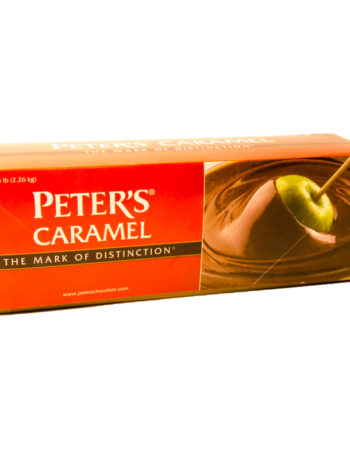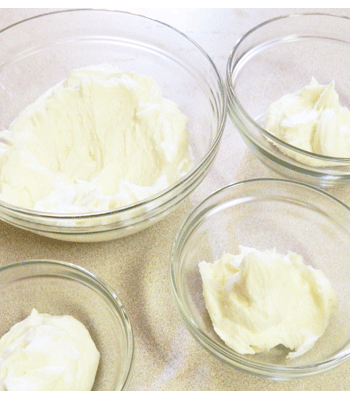Thanks to our friends at Peter’s Chocolates, we are able to better help you understand tempering and it’s principles.
Learn why true chocolate requires tempering now!
The process of tempering chocolate involves incorporating a small amount, typically 2-4%, of solid, stable cocoa butter crystals into melted chocolate. Cocoa butter is capable of solidifying into several different polymorphic forms that, as they cool and set, affect the surface finish, setting time, snap, and mouth feel of the chocolate. It is important that the cocoa butter crystals in tempered chocolate exist in the correct polymorphic form; we call these stable cocoa butter crystals. The objective in tempering is to arrange the physical “packing” of stable cocoa butter crystals in the right number and size.
The three critical variables that affect the type, size and number of cocoa butter crystals being formed during chocolate tempering are: temperature, time and agitation.
1. Temperature: Critical because cocoa butter crystals both form and melt at specific temperatures.
2. Time: Necessary for cocoa butter crystals to form and grow.
3. Agitation: Needed to ensure the cocoa butter crystals are well distributed within the melted chocolate and to prevent their premature growth.
Stable cocoa butter crystals will provide the following properties:
1. Snap
2. Gloss
3. Proper texture
4. Bloom resistance (avoiding those little white spots)
5. Good contraction for molding
Chocolate is in temper when 2-4% of the cocoa butter is in the stable crystal form.
There are four to six different forms cocoa butter crystals assume and each has a unique melting point, set of characteristics, and stability point.
1. Gamma: Exists in this form for only a few seconds before transforming into Alpha.
2. Alpha: Melts between 50-75℉. (Not stable)
3. Beta I: Melts between 60-83℉. (Not stable)
4. Beta: Melts between 64-94℉. (Stable)
It is important to provide conditions that grow “good” fat crystals and minimize “bad” fat crystals.
Understanding Proper Chocolate Temper
Properly tempered chocolate will have the following characteristics:
-Shiny/glossy surface
-Even color
-Good snap
-Smooth texture
-Good contraction
-No bloom
Improperly tempered chocolate will have the following characteristics:
-Dull finish
-Fat bloom
-Soft uneven texture
-Poor contraction
-Poor snap
Test Temper
Manual Method:
To check if chocolate is in good temper, dip a metal spatula or knife blade into chocolate and leave a small film on the blade. If the chocolate is firm and not tacky after five minutes at normal room temperature (68℉), it is in good temper. If it is still tacky, place the chocolate chunks back in the bowl and cool about 2℉. Repeat test until tempered.




Donna
February 12, 2017 at 12:11 pmHi I’ve been attempting to reheat brought choclate to melt & mould. I’m finding it difficult to stop choclate going white & dull.
Once you’ve melted your choclate are you meant to put it in the fridge or freezer for it to set in moulds. Would be grateful for any advice
Heather Smith
February 21, 2017 at 5:05 pmsounds like your chocolate could be getting too hot or too cold too fast. I would recommend checking how you are melting and then making sure your chocolate is changing in temperature too quickly. You can place it in the cooler environment to help set but don’t store it in the fridge/freezer.
Featured Product: All About Guittard A’Peels
October 17, 2012 at 10:16 am[…] -No, they do not. They are more simple to melt. See instructions below. (You can read more about tempering here). […]
Featured Product: All About Mercken’s Buttons
September 27, 2012 at 7:01 am[…] -No, they do not. They are more simple to melt. See instructions below. (You can read more about tempering here). […]
Chocolate 101: Bloom
July 26, 2012 at 10:40 am[…] compound coatings, read this. For couverture chocolate that requires tempering, read this or […]